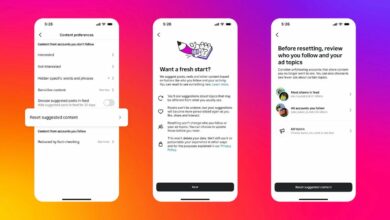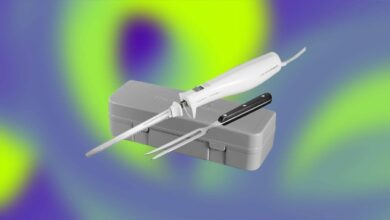SpaceX Launches Starship Flight Test 6: Everything That Happened in 14 Minutes – Video

SpaceX Launches Starship Flight Test 6: Everything That Happened in 14 Minutes
Okay, we’re now T minus 20 seconds until launch of Starship Flight 6. Okay, okay. The vehicle shot down. Booster bird of prey chamber pressure nominal. Booster and marine electronics, power and telemetry nominal. I’m dynamic for just over a minute. 6 miles away, so all the sounds are still hitting us here, we’re hearing good calls driving telemetry nominally, that’s flying straight and true. We see all 33 Raptor engines illuminated on telemetry screens. At this point we’ve passed the point of maximum aerodynamic pressure, that maximum Q. Now, in just over a minute, it’s going to be a hot staging, so we’ll see the ship’s six engines ignite. while it is still attached to the booster. Just before that we see all but three of the engines on the booster turned off in what we call Miko. Most engines are turned off instead of the main engine. Only about 30 seconds away from hot staging. Yes. And we heard, we heard that the tower is going to catch. The return flag is set to true. Starting up ship engines. Phase separation. Okay, hot staging confirmed. 6 out of 6 illuminated on the ship. Go back angry or boosted. We heard we’re going to catch. Kate, Jesse, enjoy the view. Hopefully I’ll get a booster home soon. Wow, from our view here, Dan, great view of planet Earth behind that super-heavy booster. At this time it is performing the boost backburn. There is good news that tells us that the pressure in the ship is good. That is the second stage or top portion of the vehicle. Follow along with the telemetry at the bottom of your screen. Yes, the booster is currently super heavy, currently in boost phase. This nominally increases burns and telemetry. This boost backburn lasts a little over 1 minute, so we have about 30 seconds left. We have had the closure of that goose back burn. The next step is to throw Hotage overboard. The image from the camera on the left or from the booster on the left of your screen and then the tracking cam there on the right of your screen. We’ll see those lattice fins. Booster offshore diversion. And we can also see that the hot stage has been jettisoned. Yeah, visual confirmation of that right there on your screen, which is great. Now the next spaceship follows a nominal trajectory. The next step for the booster is to go to the landing fire again, it will light 13 of those engines and then reduce it to 3 engines just before the booster is captured. Okay, just real quick, we heard the call: boost back, or excuse me, boost offshore diversion. Unfortunately, this means that we don’t go for the catch. Um, as we said earlier, both the tower and the vehicle, as well as the operators on the console, actively evaluated the commit criteria for that return to the launch tower, um, and unfortunately we didn’t have permission for that commit criteria, so we don’t go for rook catch. And we did mention that we are constantly evaluating the catch criteria. To get that in line, many things have to go right. Unfortunately we are foregoing the booster catch today, but what you see on your screen is a ship currently heading to the Indian Ocean and still looking good so far. Precisely. So views there of the booster on the left side of your screen, views of the ship on the right side of your screen. Now we said before that it was not guaranteed that we would be able to make a rook catch today. So while we were hoping for it, like we said, it was pretty epic on attempt one, but the safety of the teams and the public and the trail itself is paramount. So we do not accept any compromise. in all those areas exactly and we’re still going to get a lot of good flight data even with booster but especially with ships again we have an additional target today to re-light a Raptor engine in space which will happen again help us get ready for the possibility of doing deorbit burns, which is phenomenal, which is important for orbital flight and what you see on your screen is an image of supermassive as it makes its way back to Earth. Yes, we’re attempting another offshore landing of the super-heavy booster. Uh, so we’ve seen this before, uh, and it’s still a lot of fun to watch it come down, uh, for a gentle splash, uh, off the Gulf Coast of Texas. We can see it returning there. Uh, we saw those lattice fins earlier. There are four hypersonic lattice fins, or so we can tell. Started with the super booster. Same pattern, 13 engines come on, reduced to 3, just as we expected. And what an incredible view of the landing we got today. Oh super heavy. Yeah, I’m sure the buoycam views will be pretty awesome again. That’s why we would like to confirm once again a water landing for the super-heavy booster. Congratulations to the SpaceX team for also achieving this milestone. Now the ship continues to watch. We can see that this is so. While all that was happening. The crowds here in Hawthorne continue to respond to all these amazing views we get. The next milestone is terminal guidance. Great news there. Uh, uh, Starship terminal guidance referring to what we see here on our screen, the upper stage, uh, at, uh, about 8 minutes and 35 seconds or so, we have a ship engine shutdown, which will be the shutdown of the, uh , the, the birds of prey engines. Are. We can see on our screen that the ship offers us some incredible views, brought to you by Starlink. This view is also very interesting because we can actually see the receding tile line that we referenced earlier where we mentioned that we removed some of the heat shield tiles to test out and push the envelope on the ship and demonstrate what it is. capabilities. Ship’s engine shut down. And there we just heard the call to shut down the engine of the Sico ship. Great news there, everything continues to look great for the full view of the ship here. Trip FTS has been saved. Nominal track insertion. There’s that call that today we were waiting for confirmation of a good orbital insertion of the ship. It has been a very exciting afternoon so far. We’d like to send it back to Dan who can give us that live view experience. Then again, are you okay after witnessing another spaceship launch? Yes, absolutely fine. Um, it’s true, you guys must be jealous. This is the only way to do this. This is fantastic. No, it was really cool to see a lift from 33 out of 33. I didn’t go for the booster catch today. At first we were good and then we broke the commit criteria and did the offshore diversion, so we went and did that water landing as everyone saw. Um, we’ll go into it a little bit more, but again, this is, we’ve done it once, we’ve done it twice now. We keep trying to do this because this is just a core capability of a starship and what’s going to make it so incredible. There’s still a lot left. We are almost 10 minutes into this flight, so about 50 minutes to go. The ship has a nominal orbit, so it’s on its way around the planet. It’s going to try to perform a Space Burn. We’re going to light one of those raptor engines, the sea level engines in the center, just to demonstrate that we can re-light in that microgravity environment, really critical for burns as we start doing some orbital missions in space. not too distant future. Um, and next we’ll see a ship entry, maybe a landing, like you guys said, we’re actually going to push the ship onto this. we’re pretty much intentionally putting it in places where we expect it might not perform as well. And all of that is to help us learn, to see if we’re being a little bit too conservative, and then maybe that opens up more options for when we go and catch them. But I will contact everyone again in a moment. I’m going to watch the ship fly around planet Earth, and hopefully we’ll see it come in again in the not too distant future. And start shouting to start up. There is some light. There’s that Raptor relief. And close. Okay, there you have it, the first time ever lighting a bird of prey while it’s in space, except for our belongings. Um, so cool to see that relay. That’s a pretty critical capability that we’re going to need as we fly orbital missions in the not-too-distant future. As you can see, the ship begins to re-enter the Earth’s atmosphere. As a reminder, one of the main objectives of today’s test flight is for the ship to endure the extreme heat of the reentry and to do so in a controlled manner. Now, reentry is typically a portion of the flight where we don’t have any communication capabilities with the spacecraft because it’s returning at an orbital speed of about 8 kilometers per second or about 5 miles per second. Now, at those speeds, yeah, pretty fast. The spacecraft is moving quite quickly through the atmosphere, and that results in friction, as we can see on our screen, and this creates a plasma field around the vehicle. We get a much clearer view of the Earth in the background with the different temperatures we see with the different colors of that plasma around the ship, which is really cool to see again. Um, we’re pushing the ship’s limits today, but so far everything looks pretty nominal. Um, we’ll see how the next few minutes go. Yes, as we’ve said before, don’t be surprised if it doesn’t. Completely smooth sailing all the way to the ocean surface. As with Flight 5, we are targeting the same landing location in the Indian Ocean, but we do not expect to recover the vehicle. And there’s that nose-down orientation. Now the raptor engines will reignite and help flip the booster back up. This is a more serious change considering the orientation. The engines are switched off before the water hits and before the vehicle ends up in the water. Our ship is doing very well so far. Are you relighting? What a great reorientation by Starship. All 3 to 2. And we have Star Wow in the Indian Ocean. Some great sticky cam action here. Daylight news. Incredible. We have truly pushed the boundaries of shipping and come right back to earth.




